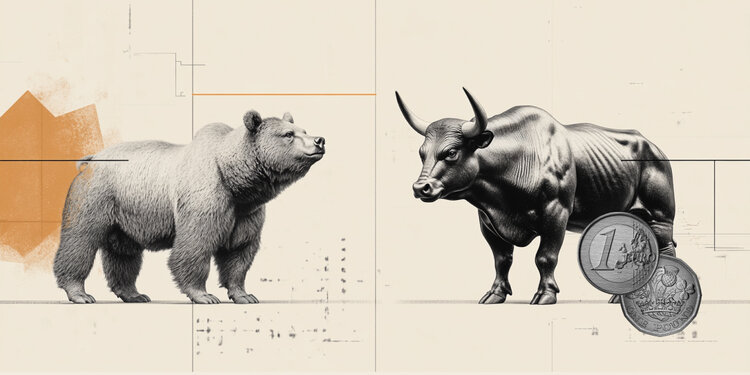- EUR/GBP gains traction as worries over potential US tariffs on the UK intensify.
- President Trump signaled the potential imposition of trade tariffs on the UK after meeting with PM Keir Starmer late Thursday.
- The Euro comes under selling pressure as risk aversion rises amid renewed US-EU trade tensions.
EUR/GBP attracts buyers after two consecutive sessions of losses, trading around 0.8260 during Asian hours on Friday. The currency pair’s upside could be linked to a weakened Pound Sterling (GBP) following US President Donald Trump’s meeting with UK Prime Minister Keir Starmer late Thursday. Trump swiftly announced the possibility of trade tariffs on the UK unless the terms of a trade deal with the US—currently ambiguous—are agreed upon within an unspecified timeframe.
On Wednesday, UK Chancellor of the Exchequer Rachel Reeves expressed confidence that trade and investment between the US and UK would remain stable despite the new US administration. She noted, “The last time President Trump was in the White House, trade and investment flows between our two countries increased, and I’ve got every confidence that that can happen again.”
The British Pound may have faced additional pressure after Bank of England (BoE) Monetary Policy Committee Member Swati Dhingra signaled support for more aggressive monetary easing, favoring four rate cuts. Dhingra explained that while the media often associates “gradual” with 25 basis points (bps) per quarter, maintaining this pace throughout 2025 would still leave monetary policy excessively restrictive by year-end.
However, the EUR/GBP cross saw a pullback as the risk-sensitive Euro faced selling pressure amid heightened risk aversion following renewed US-EU trade tensions. US President Donald Trump suggested imposing “reciprocal” tariffs on the European Union (EU) as early as April.
During a press conference on Wednesday, Trump announced plans to implement a 25% tariff on “cars and other things” from the Eurozone “very soon.” In response, a European Commission (EC) spokesperson asserted, “The EU will react firmly and immediately against unjustified barriers to free and fair trade.”
Tariffs FAQs
Tariffs are customs duties levied on certain merchandise imports or a category of products. Tariffs are designed to help local producers and manufacturers be more competitive in the market by providing a price advantage over similar goods that can be imported. Tariffs are widely used as tools of protectionism, along with trade barriers and import quotas.
Although tariffs and taxes both generate government revenue to fund public goods and services, they have several distinctions. Tariffs are prepaid at the port of entry, while taxes are paid at the time of purchase. Taxes are imposed on individual taxpayers and businesses, while tariffs are paid by importers.
There are two schools of thought among economists regarding the usage of tariffs. While some argue that tariffs are necessary to protect domestic industries and address trade imbalances, others see them as a harmful tool that could potentially drive prices higher over the long term and lead to a damaging trade war by encouraging tit-for-tat tariffs.
During the run-up to the presidential election in November 2024, Donald Trump made it clear that he intends to use tariffs to support the US economy and American producers. In 2024, Mexico, China and Canada accounted for 42% of total US imports. In this period, Mexico stood out as the top exporter with $466.6 billion, according to the US Census Bureau. Hence, Trump wants to focus on these three nations when imposing tariffs. He also plans to use the revenue generated through tariffs to lower personal income taxes.
Read the full article here


